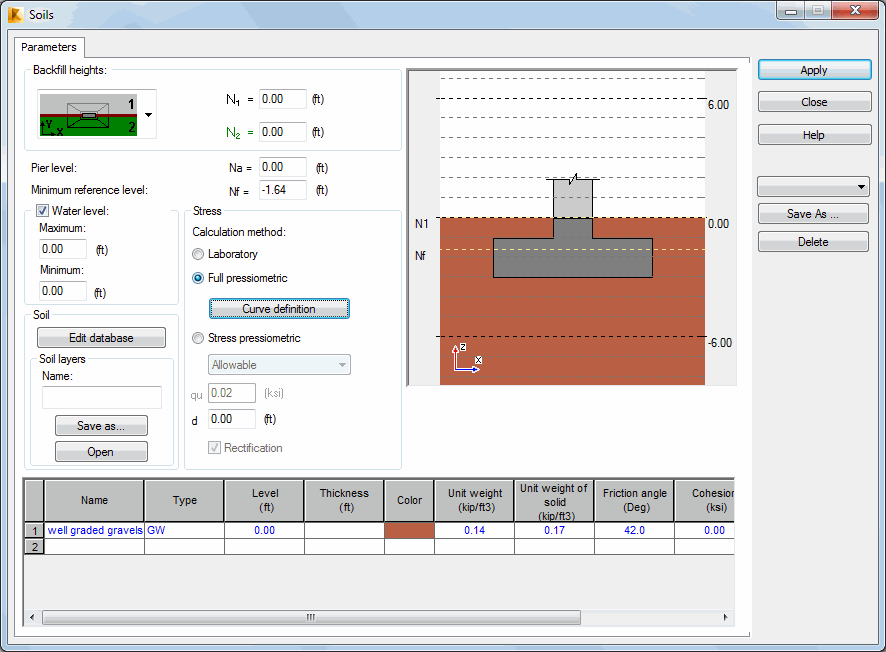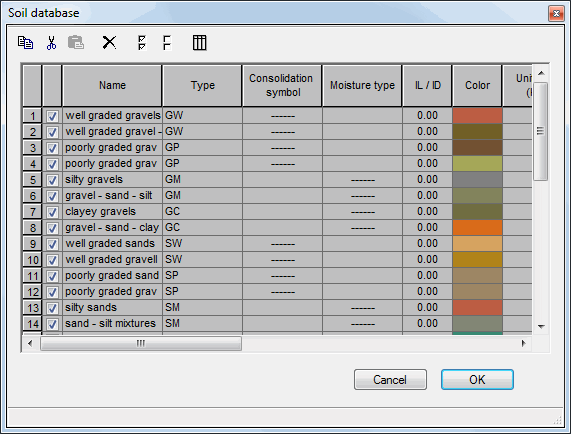In the Foundation module, click ![]() (Soil Definition) or select RC element > Soil to define soil parameters.
(Soil Definition) or select RC element > Soil to define soil parameters.

At the bottom of the dialog you can select a soil profile (type of layers).
Once the basic soil characteristics are defined, all other parameters are automatically calculated and displayed in the table. The Name field presents a name of a defined soil profile (layers). The table presents only these soil characteristics which are used in spread footing calculations. Table fields, except for the fields containing basic parameters, are not active.
If one of the French codes (DTU or Fascicule) is selected, the options allowing selection of a stress calculation method (laboratory, full pressiometric and stress pressiometric) are available. Once the full pressiometric method is chosen, the Curve definition button becomes available.
Soil profiles are saved in the form of a XML database and contain soil parameter data. They may be freely transferred between workstations and used in other modules and calculators.
Click Edit to modify soil parameters and create new soil profiles.

To create a new profile, select one of the existing soils in the Name field. The soil data is loaded and ready to be modified.
In the Stress field it is possible to determine the admissible stress in the soil (see General rules of the foundation design).
For the French codes DTU 13.12 and Fascicule 62 Titre V, you can select a calculation method of the soil load capacity and define the required parameters. The following methods and related calculation parameters can be selected (see General rules of the foundation design).
- Laboratory method - Soil load capacity is calculated based on parameters given in the soil table.
- Full pressiometric method - Defines a curve based on pressiometric research and the depth d disregarded in calculations of the foundation depth.
- Stress pressiometric method - Determines the admissible stress, the state for which it was defined, and specifies rectification of the admissible stress. These stresses are due to the spread footing geometry and the influence of horizontal loads. The depth d ignored in calculations of the foundation depth should also be defined.
The following values are defined at the top of the dialog.
Backfill size: N1 (field in which the height of the backfill on top of the designed foundation may be defined), N2 (this field may appear in the case of several locations of the foundation), pier level and minimum reference level . When Ground water level is active, two fields become available: minimum and maximum ground water level.
See also: